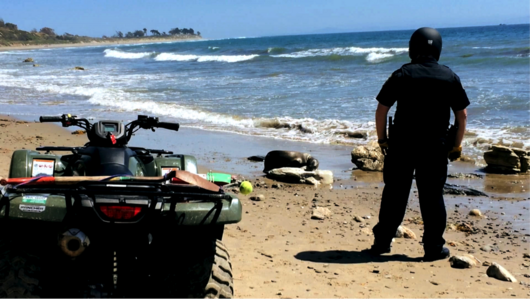Turn Back Now? 24. September 2021
Turn Back Now?
Anachronies, temporal, and chronological layering in visual arts
The 'now' as an insoluble moment of time from which we perceive our world is a key element in the temporal structuring of experience. Its indexical quality opens a discourse centered around notions of the contemporary or the present to the agents involved in experiencing and producing art.
Being only one among multiple ideas on how to conceive structures of time, the perspective of presentism yet unfolds the difficulties we face in the interpretation of other times in artworks. Turn Back Now? asks when and how contemporary art reaches back in history, changes the perception of past or present, and how viewers are affected by these gestures.
The research workshop fosters exchange between different approaches to these issues and emphasizes the need for methodologies covering the questions
- How are historical, anachronic, and other temporal references framed or produced within artworks?
- Are there any medium-specific ways of anachronies and temporal layering?
- Can we understand these means as inherently temporal and how could we use this way of seeing artworks for art historical interpretation?
RESEARCH WORKSHOP
September 24, 2021, 10:00 –17:00
online via Zoom
Institute of Contemporary Arts and Media, Catholic Private University Linz
Further Information/Registration
Maximilian Lehner, m.lehner[at]ku-linz.at
Organized and hosted by
Maximilian Lehner and Ilaria Hoppe
Institute of Contemporary Arts and Media, Catholic Private University Linz
Supported by
Bischöflicher Fonds der KU Linz
Günther Rombold-Privatstiftung
Österreichische Forschungsgemeinschaft
Follow-Up - Monday, January 17, 2022
- For the filmscreeing of Stanya Kahn's Stand In The Stream and an artist talk see here for further information.
Program Online Research Workshop - Friday, September 24, 2021
- 10:00 – 10:15
Ilaria Hoppe and Maximilian Lehner
Welcome and Introduction
- 10:15 – 11:15
Dan Karlholm (Professor of Art History, Södertörn University, Stockholm)
The 'now' and the 'then' and their temporal implications for anachronic art history
This presentation will address a set of key terms for thinking art and art history along anachronic lines and what this might implicate for our practice as art historians. I will pick up and dwell a bit on the notion of ‘the now’ as a verbal short cut for contemporaneity, and how this relates (or not) to the disturbingly awkward notion of 'the then', which actually cries out for accommodation within the same contemporary condominium. Further, I will discuss how heterochrony relates to the works of art, how anachrony relates to the history of art, and how both connect with historicity as contrary to temporality.
- 11:15 – 11:45
Mehmet Sülek (PhD Candidate, School of Heritage, Memory and Material Culture, University of Amsterdam)
Warburg Redux: Anachronistic Narratives of Mnemosyne Atlas (1927-1929) and Biennials?
In the last 30 years, Aby Warburg has been haunting art history. Despite these studies, art historians still do not know where to situate Warburg and his last project Mnemosyne Atlas (1927-1929). This paper will argue that we can understand Warburg only if we ask a more fundamental question: Why do we need Warburg today? In this regard, it will propose that Warburg’s methodology can help us to overcome the historiographic challenges created by large-scale art exhibitions, which create anachronistic narratives of not just art but also cities around the world.
- 11:45 – 12:45
Eva Kernbauer (Professor of Art History, University of Applied Arts, Vienna)
The Future of Anachronism
With a focus on the work of R.H. Quaytman, this talk will pursue contemporary art’s use of the potential of anachronism to "change time", in the sense of shaping our perception of how past, present and future relate to each other. Quaytman's practice is strong in connecting and balancing incompatible temporal layers, thus opening up not only new aspects of art history, but also new "spaces of experience" (Koselleck) as key elements of historical thinking.
- 14:30 – 15:30
Tim Barker (Senior Lecturer in Digital Media, University of Glasgow)
Unplayable Games
In this talk I think through some current theories of time, contemporaneity and technology using a selection of unplayable or 'difficult-to-play' indie video games. Rather than characterising the time of the digital as premised on speed and attention, I will use the themes of participation, exclusion, the playable and the unplayable in these art games as a way to raise some questions about what we now mean when we talk about contemporary art and the multiple, and often conflicting times, memories and histories of global, twenty-first century culture.
- 15:30 – 16:00
Helena Eribenne (PhD candidate, University of Applied Arts, Vienna)
Mirror, Camera, Action!
The mirror is an object that became associated with the Roman goddess of love, Venus. The concept of vain Venus has been repeatedly portrayed over time and consequently became a cliché resulting in practically any woman depicted nude as Venus. These women are in a liminal position playing the role of captive to their own image, rather like eternal children stuck in the mirror phase of life.
- 16:00 – 17:00
Amelia Groom (Postdoctoral Researcher, Royal Danish Academy of Fine Arts, Copenhagen)
ALL A BLUR
In this presentation, Amelia Groom (editor of the Documents of Contemporary Art anthology on TIME and researcher/writer in residence for No Linear Fucking Time, a forthcoming exhibition and program at BAK Utrecht) will share work in progress, thinking through blurriness as a way to grapple with the temporalities of dust, maintenance, and distraction.

